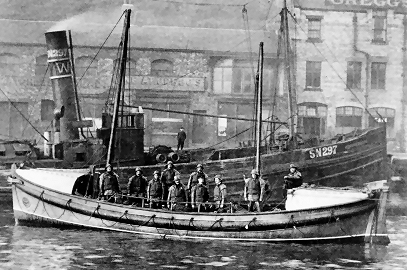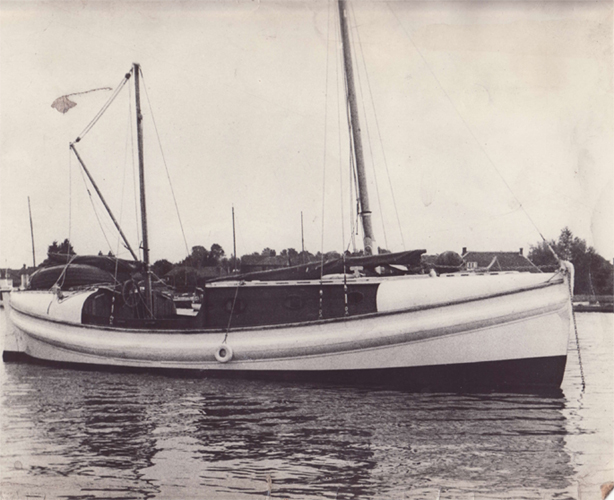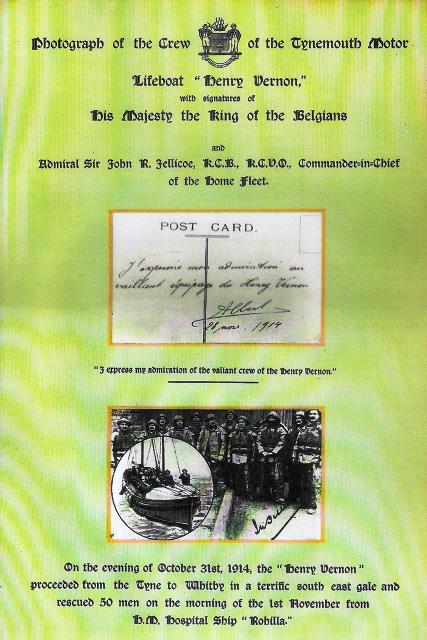
Coxswain Robert 'Scraper' Smith
An Amazing Rescue By Scraper And His Men
Great lifeboatmen such as Robert 'Scraper' Smith would have been dismayed to read the dangerous shinanigans that hoaxers have been getting up causing lifeboat crews to be called out. 'Scraper' and his crews were famed for saving up to 800 people during their rescue exploits.

Probably his most famous rescue took place on the morning of November 1, 1914. The hospital ship Rohilla, a converted liner, was caught in a heavy storm and ran aground on a reef off Whitby about 4am on October 30. There was 229 people, including medical staff, nurses and crew on board. The Whitby, Upgang, Scarborough and Teesmouth lifeboats made heroic efforts to reach the ship, but they were all in vain. The Whitby No 2 lifeboat John Fielding managed to reach the wreck twice and took off 37 survivors, but then became a victim of the rocks. So desparate was the situation that people were jumping into the boiling sea and trying to swim to the shore. Despite the bravery of onlookers wading into the crashing waves to help them, many perished before they could reach safety.

It was decided that only a motor lifeboat would be able to reach the ship. A telegram was sent to summon the Tynemouth lifeboat, the Henry Vernon on the afternoon of October 31. Within 15 minutes Robert 'Scraper' Smith and his crew were ready to set out. But it was getting dark and they had a 44 mile trip ahead to Whitby and without the aid of coastal navigation lights, all extinguished because of the war. A newspaper reporter who witnessed the unfolding events told of the dramatic rescue as the tiny Henry Vernon pushed its way towards the Rohilla.
Often disappearing from view in the deep troughs, only to reappear time and again on its determined course. "Presently, when she had passed a few fathoms beyond and away from the wreck, she stopped dead, and discharged over the boiling sea gallons and gallons of oil." Then the Henry Vernon, "guided with splendid skill and courage," reached the lee of the wreck, directly beneath the Rohilla's crowded bridge. "There was not a moment to be lost for already the effects of the oil was beginning to pass off and the waves were noticeably higher. "A rope was let down and immediately figures could be seen scrambling down into the boat with a quickness and agility that seemed extraordinary in men one presumed to be exhausted almost to death. "In less than quarter of an hour more than 40 men had been taken into the boat. It was then while the rest were preparing to leave the wreck, that two enormous waves were seen rolling up from the sea at tremendous speed. "One after the other they swept over the bridge and across each end of the remnants of the deck on to the lifeboat at the other side enveloping it fore and aft.

Each time the tough little craft disappeared for a moment beneath the spray, reappeared, tattered and righted herself gamely. "Closer still she hugged the vessel's side till every man board, fifty of them in all, had been hauled into the rescuing boat. "But the peril was not yet over. As the lifeboat shot past the wreck on her return journey she was struck broadside on by a great wave that threatened to throw her on her beam ends. "Once more she manfully withstood the shock and swept gaily out to sea in a wide semi-circle that brought her back safely to the harbour mouth." After the rescue the Henry Vernon headed back to the Tyne where thousands turned out to give the crew a heroes welcome home.
The crew of the Henry Vernon were each presented with certificates bearing a postcard of the lifeboat's crew and signed by His Majesty the King of the Belgians and Admiral Sir John Jellicoe. This is still regarded as one of the most outstanding rescues in the long history of RNLI.
Copyright © Mrs. Juile Smith 2010